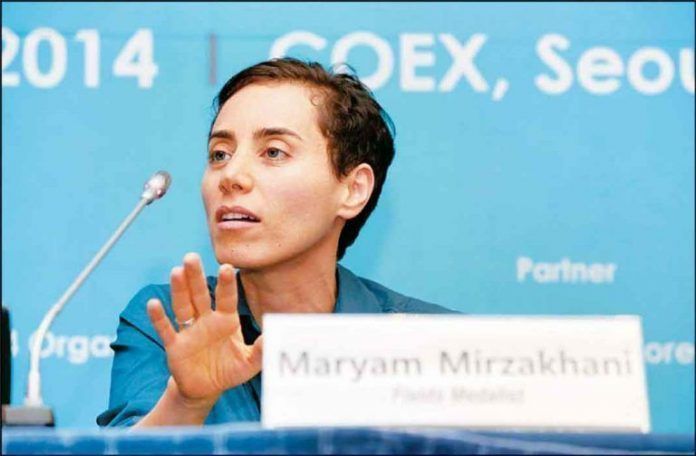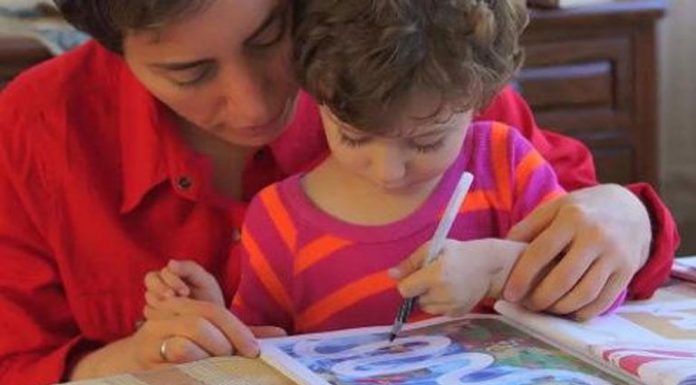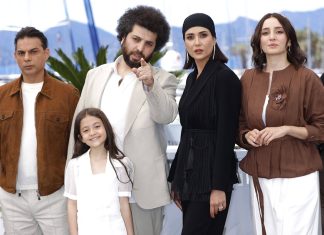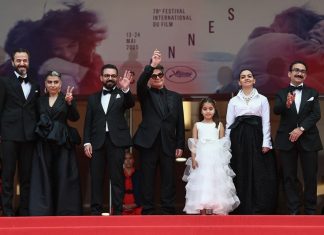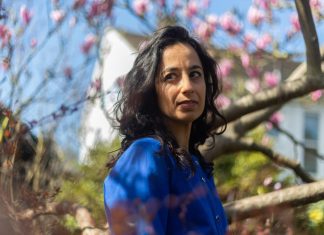By Firoozeh Nordstrom
Maryam Mirzakhani was the first woman to win the world’s most prestigious mathematics prize, the Fields Medal. George Csicsery’s “Secrets of the Surface” is the first feature-length film about the life and career of Mirzakhani, who tragically died of breast cancer in 2017 at the age of 40.
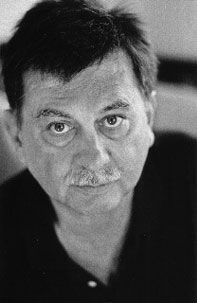
Csicsery was born in 1948 in Germany of Hungarian refugee parents. He and his family moved to the US in 1951, and he lived in Cleveland, Ohio and Buffalo, New York before studying comparative religions at University of California Berkeley. He then got a Masters degree in Cinema from San Francisco State University in 1972.
For much of his career, Csicsery alternated between film production and writing — as a journalist, interviewer, ghostwriter, and book and film reviewer.
His Mirzakhani documentary is currently being broadcast across dozens of public television stations across the United States.
Kayhan Life caught up with the director to find out more about the project.
How did you become interested in making documentaries, and in particular, a documentary about Maryam Mirzakhani?
Documentary film is an ideal tool for just observing. So many filmmakers, especially in educational documentaries, think they need to explain everything. I like to let my subjects explain themselves, their lives, their ideas. That way the viewer can get closer to the source, instead of having the story filtered through me or some celebrity host. In my films, there is very little if any outside narration.
“Where the Heart Roams” (1987) is about women who write and read romance novels. “The Thursday Club” (2005) is about a group of policemen who are World War II veterans and face student demonstrators during the disturbances of 1960s America.
In 1988, I began work on a film that changed my career path. It was titled “N is a Number: A Portrait of Paul Erdős” (1993). Before this film, very few biographies of mathematicians existed, and even fewer reached non-academic audiences. “N is a Number” found a wide public, and is still very popular after 29 years.
More importantly, it created a new career for me. I have been working on films about mathematicians ever since, including biographies of Julia Robinson, Shiing-shen Chern, Yitang Zhang, and now Maryam Mirzakhani.
For five years, I also worked on an oral history series about around 30 mathematicians that was hosted by the Simons Foundation. While these were not films, the experience immersed me in the culture and history of recent mathematics.
What was your intention in making this documentary?
Because so many of the films and videos over the past 15 years were collaborations with the Mathematical Sciences Research Institute (MSRI) in Berkeley, I was aware of Mirzakhani’s Fields Medal shortly after she received it. I suggested a film then, but because Mirzakhani was such a reserved and private person, there was not much enthusiasm for it.
This all changed when she died. We began the production in early 2018, and the completed film premiered at the Joint Mathematics Meeting (JMM) in Denver in January 2020.
I wanted to present Mirzakhani’s biography, perhaps providing some insight into her personality, her motivations, how her mind worked, and the quite challenging area of what it is she actually did in mathematics.
Mirzakhani was at the cutting edge of a field where fewer than 100 people could even read her papers and understand them. But everyone who did was deeply affected by the depth of her intuitive ability to link areas where no connection had been detected previously. One thing I’ve learned as a non-mathematician is that the most exciting developments in mathematics often come from people finding unexpected connections between seemingly unrelated areas. Then new fields are created allowing for all kinds of openings.
What documents and evidence did you use to prepare this documentary?
I relied entirely on mathematicians and people who had direct contact with Mirzakhani. I used the stills and documents they gave me, voice recordings, videos of two of her lectures, and clips from videos made at the time she received the Fields Medal. There were also interviews with students who had not met her, and visuals of tributes to her in Iran.
Were you able to talk to Maryam’s relatives and her parents?
I only had access to her husband and daughter. Her parents chose not to participate in the film.
What was the reaction of the media and other documentarians to your documentary?
So far I have had only very positive reactions. I’ve heard only good things from other filmmakers.
Maryam Mirzakhani was a shining star in the Western scientific community, and left us suddenly. In Iran, because she did not wear the hijab, the media published her image with a headscarf and hijab.
It is a sign of hope that people recognize ideas and human actions so worthy that they rise above our normal disputes and conflicts. It is a validation of the time and effort that Mirzakhani applied to thinking about mathematics.

